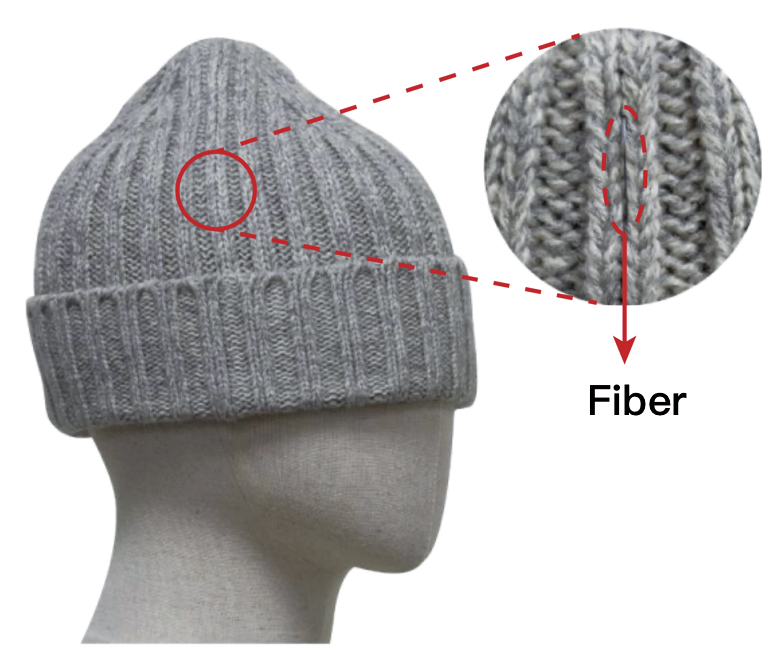By YAN Fusheng
Imagine a beanie that “sees” traffic lights for the visually impaired, or a shirt that doubles as a high-speed data receiver. These aren’t sci-fi fantasies—they’re the first threads of a revolution sparked by ultra-thin, flexible semiconductor fibers. In a Nature study published February 2024, researchers from the Chinese Academy of Sciences and Nanyang Technological University unveiled a breakthrough in producing high-performance optoelectronic fibers, overcoming decades-old engineering hurdles.

A functional beanie woven with semiconductor optoelectronic fibers is able to sense the signals of
traffic lights and alert the wearer via a mobile phone. (Graphic: Wang et al., 2024)
Taming the Molten Core
At the heart of this innovation lies the molten-core method—a process akin to microscopic glassblowing. Here, molten semiconductor material, like silicon (Si) or germanium (Ge), is encased in glass and stretched into hair-thin fibers. But like a sidewalk cracking under temperature variation, stress plagued earlier attempts. As fibers cooled, mismatched expansion between the semiconductor core and glass cladding caused fractures. Worse, capillary instability—think of a dripping faucet’s irregular droplets—disrupted the fiber’s uniformity.
To overcome the challenges, the researchers developed a mechanical design approach that addresses the root causes of stress and instability.
They found that traditional silica glass didn’t relax the stresses fast enough for Ge fibers, leading to cracks in the core. By swapping rigid silica glass for aluminosilicate glass (ASG) in Ge fibers, the team bridged the thermal mismatch. ASG’s flexibility and closer thermal expansion coefficient to Ge allowed the fiber to cool without cracking. For Si fibers, they introduced a stress-relieving “sacrificial layer” that peels away post-production.
As a result, the researchers created continuous, ultra-long semiconductor fibers, flawless under microscopes. These fibers bent, twisted, and compressed without breaking, achieving mechanical resilience rivaling commercial optical fibers.
From Thread to Tech
With robust fibers in hand, the team wove them into functional textiles using convergence fiber drawing—a technique that braids semiconductors, metals, and polymers into a single strand. The resulting fibers, with rectangular cross-sections and embedded Schottky contacts (essentially nanoscale light-activated switches), acted as lightning-fast photodetectors.
As demonstrated, Ge fibers detected infrared light (1,550 nm) with 0.35 A/W efficiency within microseconds—ideal for Li-Fi (light-based Wi-Fi); while Si fibers excelled in visible light (532 nm), enabling health monitors woven into watchbands, where they can track heart rates by detecting changes in light reflected from the wrist without needing a rigid sensor.
The applications read like a futurist’s wish list:
Smart Beanies: Fiber-integrated hats detect traffic signals, alerting wearers via vibrations—a “guide dog” for the visually impaired.
Underwater Li-Fi: Submarines equipped with fiber arrays could transmit data through murky depths, bypassing radio limitations.
Washable Tech: Fabrics retained function after 100 laundry cycles, thanks to biocompatible, waterproof coatings.
This research isn’t just about better fibers—it’s reimagining technology’s role in daily life. By fusing mechanical ingenuity with material science, the team has woven a future where electronics aren’t worn as external devices but woven within textiles, invisibly enhancing how we live, communicate, and explore.
Reference
Wang, Z., Wang, Z., Li, D., et al. (2024) High-quality semiconductor fibers via mechanical design. Nature, 626(7997), 72–78. doi:10.1038/s41586-023-06946-0

